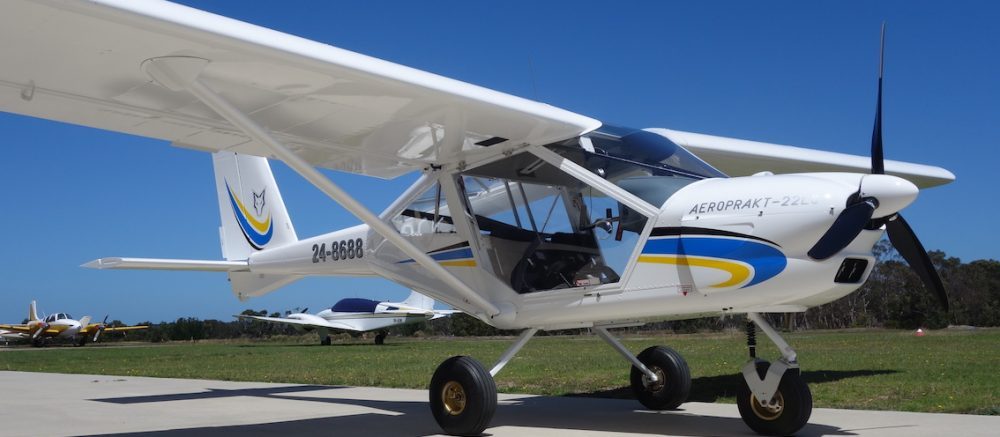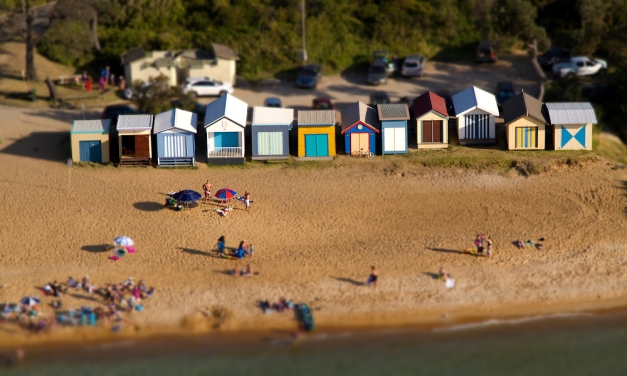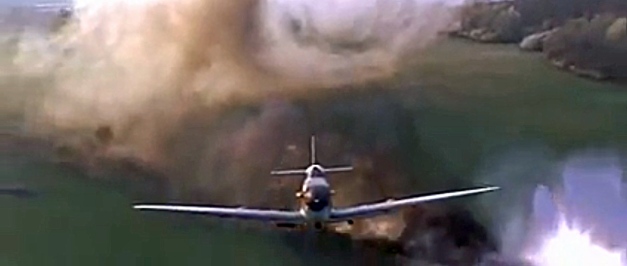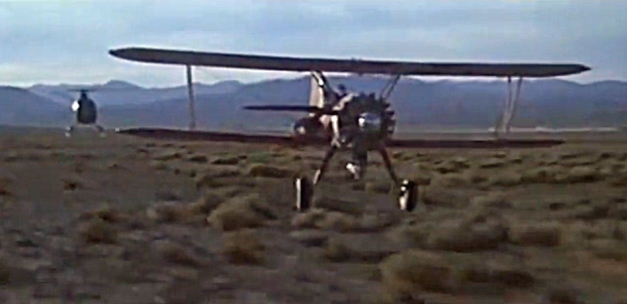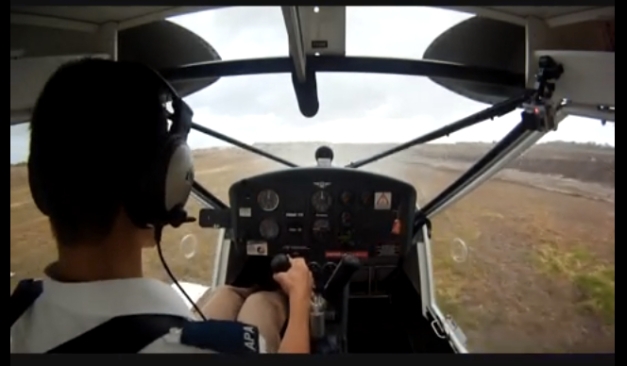
Yes, this is an ultralight! Photo by Michael Priesch
I was recently reading an article on bydanjohnson.com (a big USA-dominated aviation website covering light sport and ultralight aircraft) about the best selling recreational and light sport aircraft in Germany, comparing them with what’s top of the pops in the States.
Dan’s article got me thinking about the Australian Recreational and Light Sport Aircraft (S-LSA) market. Are our tastes different from the USA, Germany and other countries? I did some basic research on registrations and it seems Australians, Americans and Germans all have their own – different – ideas about what they like…no surprise really!
A particularly stunning piece of information from Germany is that the MTO-Sport gyrocopter lists at #2, with almost 350 on their ultralight register. What do the Germans know that we don’t? I have never been a fan of gyrocopters, believing them to be inherently lethal – but things must have changed a lot for them to be #2 in the German top 10. Additionally, Rotax reports that gyrocopter manufacturers are currently the biggest buyers of 912 engines out of any aircraft sector in the world. However, gyrocopters in Australia are a bit of a ‘grey’ area, not registered either with RA-Aus or CASA. The current (unofficial) Australian gyrocopter register suggests there may be 250-260 of all types in Australia, although they clearly state that there may be others flying which are unregistered.
For information, the #1 ultralight in Germany is the Ikarus C42 with 582 flying; there are but three examples in Australia.
Slightly unexpectedly and in spite of quite tough USA insurance conditions, Americans really go for the traditional tail dragger – Cub-alikes account for a major slice of their LSA market – while here and in Germany modern taildraggers are nowhere near as popular. Too difficult for us to fly?
An examination of the Australian ultralight and LSA registers (RA-Aus and CASA/VH-) shows some interesting statistics. Out of around 5,300 current ultralight and LSA registrations:
– about 5,200 are on the RA-Aus register and 100 on the VH- register
– about 2,700 of these are factory-built, the remainder are amateur built
– there are about 450 factory-built powered weight-shift/trikes
– there are about 350 factory-built powered parachutes
– the remainder, about 1,900, are broadly speaking factory-built ‘3-axis’ aircraft
Making type comparisons with other countries outside Australia is quite difficult, as different registration regimes are used – so for example weight-shift trikes are classified differently in Germany. However, here in summary, with a few comments, are some broad brush Australian figures. Please note – the numbers exclude amateur-built aircraft
The top 10 factory-built aircraft:
1. Jabiru, all models – 556. Not surprising really, as they have been in business for 25+ years and are generally seen as the least expensive 3-axis home-market offering.
2. Airborne Windsports – 402. Weight-shift/trikes are a big chunk of the Australian RA-Aus register; Airborne, the Australian manufacturer, has easily the lion’s share.
3. Aerochute Industries – 335. Personally, I am surprised at the number of powered parachutes on the register; I hardly ever see them flying (maybe I don’t get up early enough!).
4. Tecnam, all models (except twin) – 174. Tecnam has a plethora of models, some of which have sold only a handful – it must make spare parts quite a headache for the factory. Interesting to see that Tecnam has sold fewer S-LSA aircraft in USA than in Australia.
5. Thruster – 173. This British built ‘microlight’ is still in production, although it appears that the most recent new registration in Australia goes back to the early 2000’s.
6. Austflight Drifter – 139. The Drifter is, alas, no longer available as a new aircraft but was at one time the mainstay of ultralight flying in Australia.
7. Aeroprakt A22 Foxbat, both versions – 128. Australia is currently the leading market for Aeroprakt A22 aircraft.
8. Australian Lightwing (ALW) – 109. I understand that although the original Lightwing is no longer made, ALW now offers a much changed LSA version, of which I could find only one registered.
9. Skyfox Gazelle – 71. Another mainstay of ultralight flying, no longer in production.
10. Evektor Aircraft, SportStars & Harmonys – 53. It is surprising that, despite all the hype, similar aircraft by the same designer: Sport Cruiser/Pipersport, Rokospol and Aero Bristell combined have nowhere near matched the success of the SportStar.
The next 10 factory-built aircraft:
11. Flight Design CT – 42. This is the most popular S-LSA sold in the States, although its lead is slowly but surely being whittled away by the Cub S-LSA replica made by Cubcrafters (276 in USA at December 2013).
12. Pipistrel, all models – 36. Made in Slovenia, this company has a reputation for innovation and fuel economy. Also have sold fewer in USA than Australia.
13. FlySynthesis, mainly Texans & Storches – 34. Italian company, not yet accepted by FAA as S-LSA aircraft.
14. Eurofox, all models – 30. This is really an update of the old Gazelle. Currently the least expensive 3-axis factory-built S-LSA on the USA market.
15. TL Ultralight, mainly Sting & Sirius – 27. Czech company. Sting is a very pretty little plane.
16. Micro Aviation Bantam – 24. This New Zealand originated aircraft is still on the market but the most recent registration in Australia appears to have been over 6 years ago.
17. Savannah – 23. Savannah was more successful marketing kits for amateur building.
18. Alpi Pioneer – 19. Italian company, predominantly wood airframe. Pretty aeroplane, particularly the retractable.
19. FantasyAir Allegro – 18. Now made in USA.
20. Slepcev Storch – 18. Australian built, sadly no longer available.
Factory-built aircraft that didn’t quite make the top 20 include: Sport Cruiser/Pipersport (15), Brumby high & low-wing (15), Cessna 162 Sky Catcher (12), Zlin Savage Cub (12), Petrel (10), Sadler Vampire (9), Moyes Dragonfly (8), Kappa Sova (Sabre) (8), BRM Aero Bristell (8), FK-Lightplanes, all models (7) and Seamax (6). And there is a huge long tail of manufacturers who have registered 1-5 aircraft over the years.
A word of caution: the only two figures above, of which I am certain, are those for the Foxbat and the SportStar/Harmony, because I have the registration lists. There may be minor % errors in the other figures – but I have no reason to believe that the overall picture would change much, except maybe at the bottom end of the list. I am well prepared to eat humble pie if I have got any numbers significantly wrong. Firstly, the RA-Aus and CASA registers may not be up to date (heaven forbid!). Secondly, owners and manufacturers/importers unfortunately do not always use the same name terminology when registering aircraft, which makes tracking down every single one of a particular type quite difficult. For example, I checked ‘Foxbat’, ‘A22′, Aeroprakt’ and ‘Silverwing’ (a previous trading name of Foxbat Australia) and still the number of listed Foxbats did not match my own records of actual registrations. So it is quite likely this could be true of other makes too. I’m sure those involved will soon put me right – particularly if I quoted too low a number!
All comments welcome.
